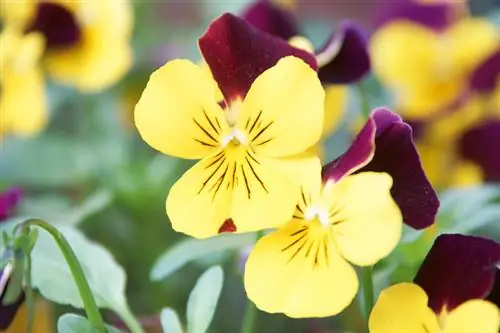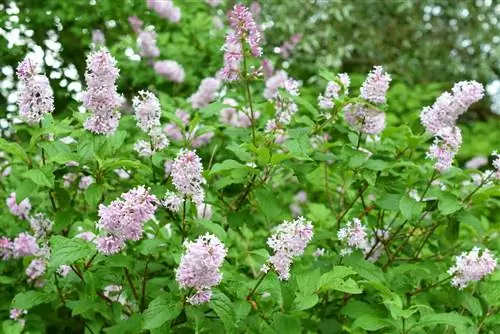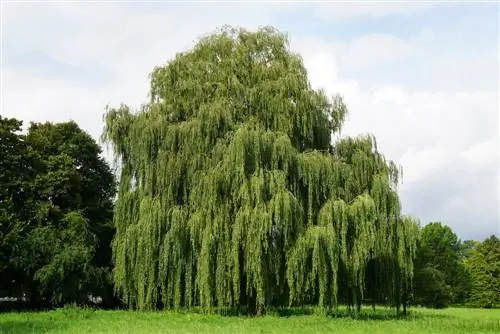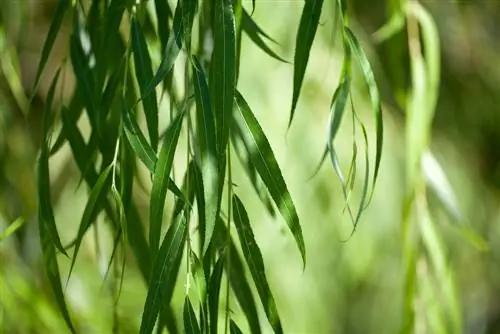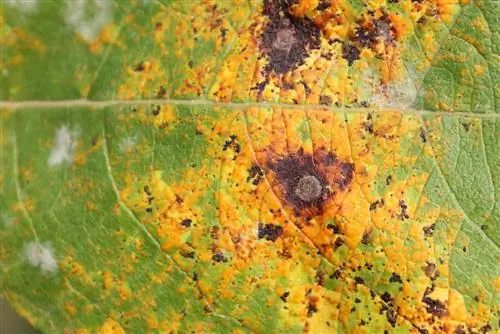- Author admin [email protected].
- Public 2023-12-16 16:46.
- Last modified 2025-01-23 11:20.
The weeping willow majestically lets its long shoots hang down to the ground. The visual appearance alone deserves a look at the deciduous tree in detail. Here you can find out in advance what special features are hidden under the dense foliage and where the weeping willow actually comes from. The information on this page not only serves to distinguish a weeping willow from other types of willow based on details such as flowers, leaves and bark, but also helps you decide whether the weeping willow is suitable for planting in your own garden.
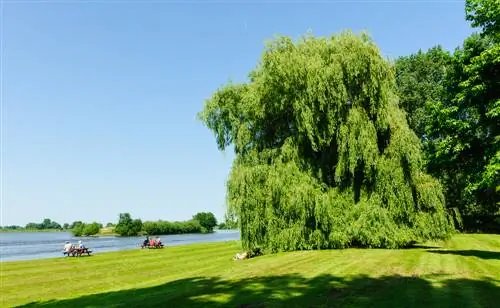
What are the characteristics and requirements of a weeping willow?
The weeping willow is a majestic deciduous tree that can grow up to 20 m high. It is known for its drooping branches, rapid growth and yellow catkin flowers. Weeping willows prefer sunny locations near water, with moist, nutrient-rich and loose soil.
General
- Synonym: hanging willow, Chinese weeping willow, Babylonian weeping willow
- Family: Willow family (Salicaceae)
- Tree type: deciduous tree
- Latin name: Salix alba Tristis
- numerous hybrids available
- actually not winter-proof, only cold-resistant through breeding
- Use: as bank reinforcement, rarely in private gardens
- comparatively low life expectancy
- Pioneer trees
Origin and distribution
- Country of origin: Asia
- current distribution: worldwide
Location requirements
- sunny
- near water
- moist soil
- nutrient-rich soil
- loose soil
- pH value: acidic to alkaline
- also suitable for pot cultivation
Habitus
- maximum height: around 20 m
- Shallow roots, very pronounced root formation
- rapid growth
- drooping branches
- sprawling growth
- threatens to break in old age
leaves
- Arrangement: alternate
- Leaf shape: lanceolate, tapering
- Leaf edge: sawn
- Length: 8-12 cm
- Width: 2.5 cm
- Length of petiole: 5 cm
- Color of the top of the leaves: shiny green
- Color of the underside of the leaf: blue-green
- Color during budding: bright yellow-green
- Autumn color: yellow-green
- heavy fall of leaves in autumn
Bark and wood
- first yellow, later brown
- Shoots: yellow and strong
- Color of branches: light gray
- Texture of the branches: thin, elastic, rod-shaped, bare
Bloom
- Shape: slim kittens, cylindrical, hanging
- Length: 4-5 cm
- Color: yellow
- Flowering period: April to May
- Frequency: unisexual (dioecious), with some exceptions
- Pollination: by animals and the wind
- strikingly fragrant, considered a pasture for insects
Fruits
- Type of fruit: capsule fruits
- Fruit ripening: May to June


